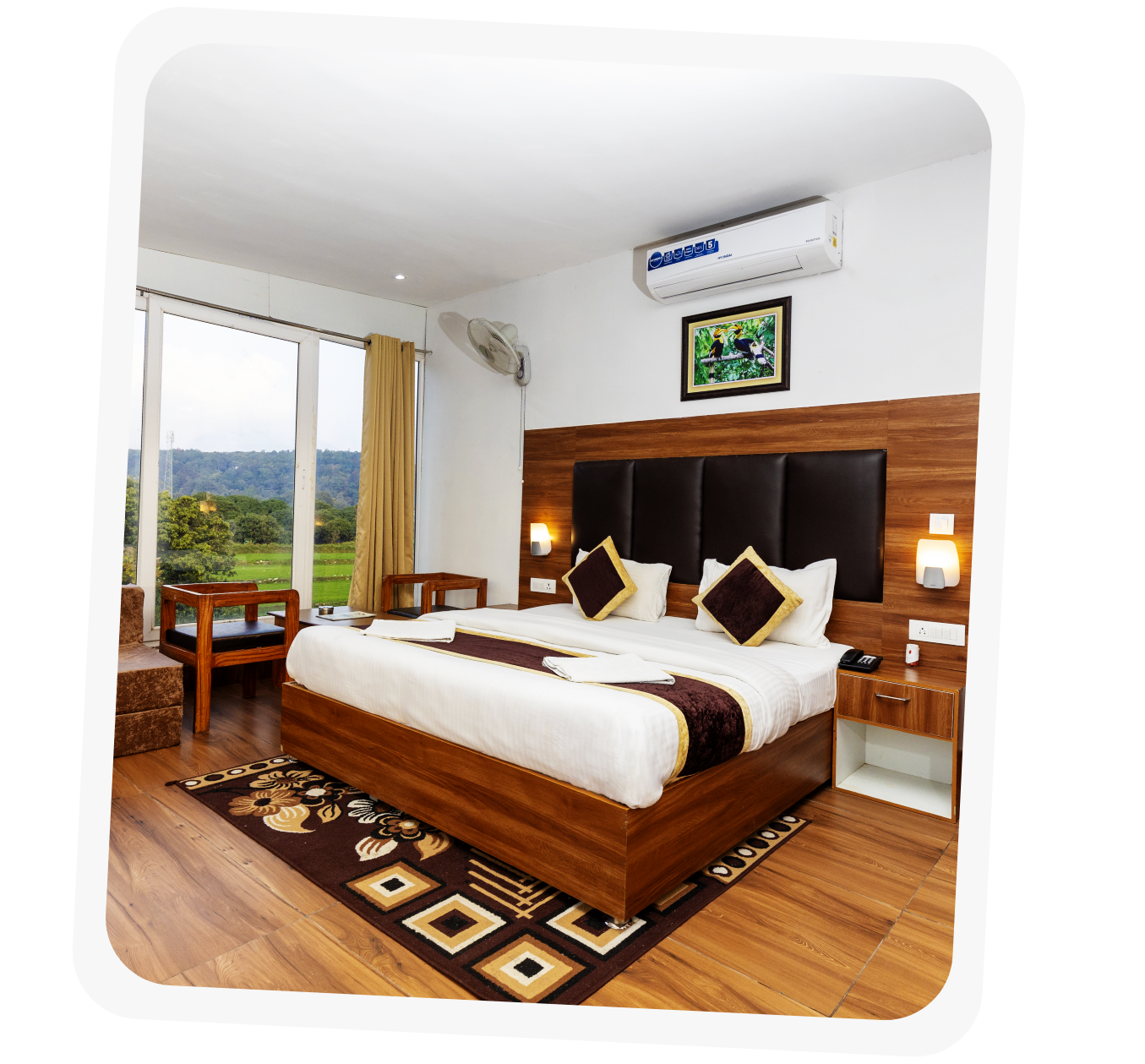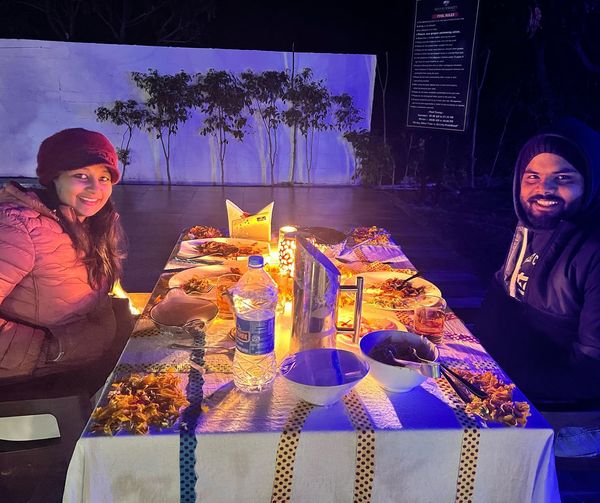Welcome to the exciting world of jungle safaris, where the great outdoors meets adventure! Imagine yourself entering the heart of nature's area. Imagine finding yourself surrounded by an abundance of greenery and fresh air.
Jim Corbett National Park provides an awesome jungle safari experience with its various safari zones, which include Jeep Safari and Canter Safari. Jeep safaris are the main attraction of the park, with professional drivers and educated guides.
A jungle safari is more than simply seeing big cats; it's an adventure of discovery where all creatures, from small bugs to huge elephants,.
If you carefully pay attention, you may hear the rustle of leaves, the haunting cries of monkeys resonating through the trees, and the melodic singing of birds as they go about their everyday lives.
Imagine the adventure of getting into a safari vehicle and bouncing down rough tracks while keeping an eye out for hints of activity through the dense forest.

The suspense increases with every second that goes by since you never know what kind of animal could appear around the next corner. Discover undiscovered treasures and mysteries in the forest under the guidance of knowledgeable guides.
You will see the amazing beauty of pure environments. And when the world around you stops in expectation during those infrequent moments of silence, you will experience a deep connection to nature that goes beyond words and makes a lasting impression on your spirit.
Are you prepared to go off on this once-in-a-lifetime adventure? Come along with us as we journey deep into the jungle, where every turn brings with it fresh discoveries and life-changing experiences.
No matter how experienced you are, the wilderness has something amazing in store for you. Together, let us go on this amazing adventure and make lifelong memories. Let the adventure begin! Welcome to the jungle safari!
Dhikala Zone: This is the biggest and most well-known zone, with a high tiger density and a variety of landforms.
Bijrani Zone: The western region of the park is noted for its lots of animals and vehicle safaris.
Jhirna Zone: This area is well known for its wooden zone, surrounded by Sal trees, located in a south direction.
Dhela Zone: Just nearby to the public, this area provides peaceful settings and chances to see animals.
Durga Devi Zone: Located in the northeast part of the park, this area is known for its varied animals and gorgeous scenery.
Dhikala Zone: With stunning scenes and luxurious resorts, this area is situated next to the banks of the Ramganga River.
Sitabani Buffer Zone: A calm haven with green forests that is well-known for birding, nature hikes, and trips to historic temples and ashrams.
Sonanadi Animal Sanctuary: Located next to the central region, this tiger reserve offers a pure environment and a home for a variety of animals.
Jim Corbett National Park provides a great experience for animal lovers, nature lovers, and explorers.

Jim Corbett National Park, located in Uttarakhand's Nainital District, is a wildlife lover’s dream. The park has a diversified environment with a plain area and a river that sustains a wide range of greenery and animals.
The park is home to a variety of wildlife, including Bengal Tigers, Asian Elephants, Leopards, Deer, Crocodiles, Langur, Black Bucks, and over 600 bird species. Bengal Tigers are Jim Corbett's crown; their mysterious presence adds adventure to the unbreakable woodlands.
More than 1,000 elephants walk in the park, some of them regular. Leopards are quiet and mysterious, whereas chitals are graceful and plentiful. Sambar deer are huge deer with amazing horns and crocodiles. Langurs are fast and friendly, but sloth bears have fur and are sleepy. The park also has approximately 600 bird species, such as eagles, peacocks, and jungle birds.
In addition to serving as a haven for wildlife, Jim Corbett National Park serves as a main point for neighborhood-based programs that support responsible and environmentally friendly travel.
The management of the park and local government place a high priority on maintenance measures, such as programs for renewal.
To protect the animals and their environment, wildlife safaris are used safely and follow specified routes and speed limitations.
Our resorts provide eco-friendly rooms and cottages with waste management, sustainable energy sources, environmentally friendly design, and water savings. Garbage management initiatives include recycling and garbage separation.

Popular tours of Jim Corbett include Jeep safaris, a chance to explore the area in open-roofed Jeeps with knowledgeable guides.
Jeep safaris are offered in chosen sections of the park, such as Bijrani, Jhirna, Dhikala, Durgadevi, and Sitabani. The park is separated into several zones.
Jeep safaris last between three and four hours and offer flexibility in terms of schedule and journey.
They provide fantastic chances to see wildlife, including birds, deer, tigers, elephants, and leopards.
Canter SafariFor the office group, family, or group of friends who are open to sharing entry gates, canter is the best choice as compared to jeeps.
Canter safaris are more spacious and have open seating, making them a more affordable choice for exploring parks.
They travel through particular park zones after leaving from specified entry gates; they are similar to jeep safaris but take a different route.



There is an online reservation via the official website. Customers can select their favorite exploring zone and choose between jeep, canter, or elephant safaris. Reservations should be made in advance, especially during busy times of the year.
It is necessary to share your information, such as contact details, identification documents, and visitor numbers. There is an online payment process, and payments made via licensed brokers or tour companies are accepted.
Visitors receive instructions for the safari experience and a confirmation after their booking is completed. Enjoy the breathtaking scenery and wildlife of Jim Corbett National Park with the jungle safari service provider.
By air: The closest airport is 50 kilometers away, at Pantnagar Airport.
By train: Major cities including Delhi, Lucknow, and Varanasi are connected to the 12-kilometer-distance Ramnagar Railway Station. From Ramnagar, there are buses and taxis available.
By road: From Delhi, Nainital, and Haridwar to Ramnagar, there are state-run buses and private cabs. Fans of self-driving cars can choose the picturesque path.
Local Transportation: From Ramnagar or other towns, taxis or shared jeeps may be rented. During the busiest travel seasons, it is advised to plan transportation in advance.
